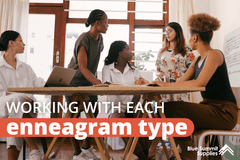There are many different ways to listen to someone, but not all are equally as effective. Passive listening occurs whenever someone’s speaking to you while you’re distracted, either by your phone, a task, or just your own thoughts. Active listening, on the other hand, means the speaker has your undivided attention. Active listening isn’t easy; it requires a lot of effort and energy, which is why it’s important to continually hone this skill with active listening activities.
In this post, we’ll discuss the difference between active listening vs. passive listening and share active listening activities that will improve a team’s communication skills. We’ll also define critical listening, comprehensive listening, and empathetic listening, which are all effective and intentional forms of listening.
Active vs. Passive Listening
What is the difference between active and passive listening? When it comes to the difference between active and passive listening, it’s right there in the name. Passive listening is hearing something without really considering it. You know the person is speaking and you’re catching most of what they’re saying, but you’re a bit preoccupied with looking at your phone or wondering what you’re going to make for dinner. It’s listening without internalizing any of the information; essentially, you’re just letting the other person have a one-sided conversation with you. Passive listening doesn’t require any extra effort on the listener’s part, and it can lead to poor communication, misunderstandings, and conflict.

Active listening is just the opposite; it takes a great deal of energy, empathy, and attention to actively listen to someone else. Active listening involves eye contact and responses that show you comprehend what the other person is saying. Imagine you’re speaking with your boss’s boss, the owner of the company you work for. How would you demonstrate that you’re hearing everything they’re saying? Active listening is all about giving the person you’re speaking with the respect they deserve, and it ensures you’re able to comprehend and remember what someone says.
💡 Signs of Disrespect at Work and How to Build a Culture of Mutual Respect

How Does Active Listening Differ from Just Listening?
There are many different ways to listen to someone. Think about how you might listen to an eight-year-old talk about Minecraft. Are you giving them your full attention, or are you simultaneously trying to figure out what an ‘enderman’ is while also focusing on driving them home from school?
Active listening requires you to engage with the other person and really focus on the message they’re trying to get across. You can’t multitask while actively listening to someone—the conversation requires your full attention.

Active Listening Activities Will Improve Your Listening
Active listening comes naturally to some more than others. As a manager or business owner, take the time to help your team build these skills. Prioritizing active listening and building the necessary skills will help a team communicate effectively and avoid conflict. It will also help build trust among team members, as everyone will feel respected and heard.
Active listening exercises can improve active listening skills and contribute to team building. Below we’ve outlined some of our favorite active listening activities that will help your team communicate more effectively.

Cookie Navigation
The cookie navigation activity is all about actively listening to someone’s tone of voice.
In cookie navigation, one participant must guide a blindfolded team member through a room full of obstacles, such as tables, chairs, or other team members, using only the word “cookie.” They can’t touch the blindfolded participant or offer any guidance other than using the word “cookie” with different variances in their tone of voice. If the blindfolded person makes it to the other side of the room without touching any of the obstacles, the team wins.
The blindfolded team member must actively listen to the way their guide is saying the word “cookie” in order to figure out how they should move through the room. For example, if the guide harshly shouts “COOKIE,” the team member might take that direction to mean stop.
The only information the blindfolded team member has is their guide’s tone of voice, so it’s up to them to figure out the directions their guide is trying to convey. If you can hear the word cookie being spoken from low to the ground, that means you’re supposed to crouch. If a series of “cookies” are uttered from the left side of the room, that means you’re supposed to move to the left.
Cookie navigation is by no means an easy activity, which is why it’s an excellent way to train your team to actively listen to one other.

Listen and Summarize
Active listening requires you to retain what the other person says. In order to hone this skill, have team members break off into pairs or small groups.
Have one person describe something in detail or tell a story over 2-4 minutes. This works best if you give teams cues to start off with, such as:
- Describe your favorite place.
- What is your best memory in your current job?
- What is your favorite food to cook? How do you make it?
- Describe the plot of your favorite movie.
- Describe a happy memory from your childhood.
- What is your favorite book and why? What is it about?
- If you had a superpower, what would it be? How would you use that power?
Everyone needs to actively listen to the person’s story. After they’re done speaking, the person or people who were listening need to accurately summarize what they just heard.

Nonverbal Activities: Charades
Whenever we speak in person, our body language does about half of the communicating. A key aspect of active listening is being able to pick up on someone’s non-verbal cues in order to fully comprehend the message they’re trying to convey. Sometimes a person’s nonverbal cues completely negate the words they’re using. If someone says, “Sure, I’d love to help you move on Saturday,” while rolling their eyes and sighing, it’s a surefire sign they’re not being genuine.
Any activity that involves interpreting nonverbal cues will improve a team’s active listening abilities. Simple charades games can be a lot of fun, and you can adapt the game based on the amount of time you have, the number of people, and what types of topics the team wants to act out.

You can choose your own words, use categories like movies, animals, or office supplies, or utilize online word generators to decide what each person or team needs to act out. Pro tip: add the words to flashcards beforehand so that team members can get straight to the charades game. For a more structured approach, board games are also available online or at your local games store.
💡 Learn more about nonverbal communication, including How to Improve and Interpret Workplace Body Language.
How Do Other Types of Listening Compare
Critical Listening Definition
Critical listening requires you to actively engage with what you’re hearing, but critical listening is not the same as active listening. Critical listening requires the listener to analyze the other person’s argument, assess its strengths and weaknesses, and determine whether or not they agree or disagree.

Critical listening examples are more common in academic or political settings that involve a lot of passionate debate, but critical listening is by no means limited to those professional settings. Consider, for example, the final season of Game of Thrones, which divided fans. If you’re a fan of the final season and someone’s ranting at you about how much it sucked, you’re going to be listening critically so that you can better pick apart their nonsensical arguments.

Comprehensive Listening Definition
The definition of comprehensive listening is somewhat similar to both active listening and critical listening. It requires you to understand the language and vocabulary of the speaker so that you can comprehend what they’re saying and communicate with them in return. An example of comprehensive listening is taking notes during a meeting or presentation.
Empathetic listening takes active listening to a whole other level. Empathetic listening requires the listener to not only actively engage with what the other person is saying but to step inside their shoes and see things from their perspective, both emotionally and intellectually. It requires you to consider the emotions and feelings behind the person’s words; even if you disagree with what the person is saying, you’re still providing them with a safe space to express themselves.
Empathic listeners don’t ask for evidence to back up the speaker’s claim; they patiently reserve judgment while the speaker verbally sorts out their feelings and ideas. Empathetic listeners are like a mirror for the speaker, using phrases like, “I hear you,” or, “so you’re saying that you feel like you’re the only member of the team really contributing.”
The focus is on understanding where the person is coming from and why they feel that way. It’s an excellent way to keep someone from feeling or becoming defensive.

There are many different ways to intentionally listen to another person. Whether you focus on active listening, comprehensive listening, or empathetic listening, the key is taking the time to truly listen to the person who is speaking to you. It’s not enough to passively listen to someone while multitasking, as that shows disrespect and erodes team trust. Active listening is a skill that needs to be practiced on a daily basis and encouraged throughout the workplace.
More from Blue Summit Supplies
💡 Transparent Communication in the Workplace
💡 How to Build Trust in the Workplace
💡 Work Better Together by Using Enneagrams to Understand Coworkers
We’re dedicated to helping businesses improve communication, productivity, and wellness. Follow our office supplies blog for the latest trends, office strategies, product comparisons, and more.
If you have any questions or want to talk to our team, send us an email or connect with us on Twitter, Facebook, or Instagram.
 For more informative articles about office supplies, subscribe to our email newsletter!
For more informative articles about office supplies, subscribe to our email newsletter!
Never fear, you won't begin receiving daily sales emails that belong in a spam folder. Instead, we promise a fun weekly roundup of our latest blog posts and great finds from across the web. And if you lose interest, it's always easy to unsubscribe with a single click.









